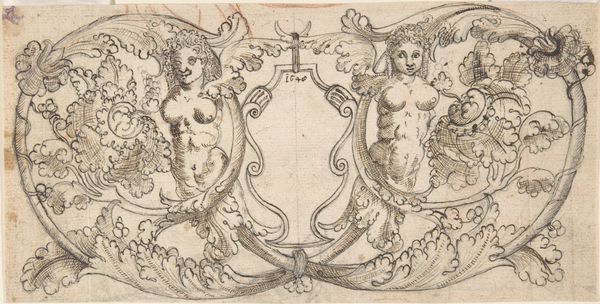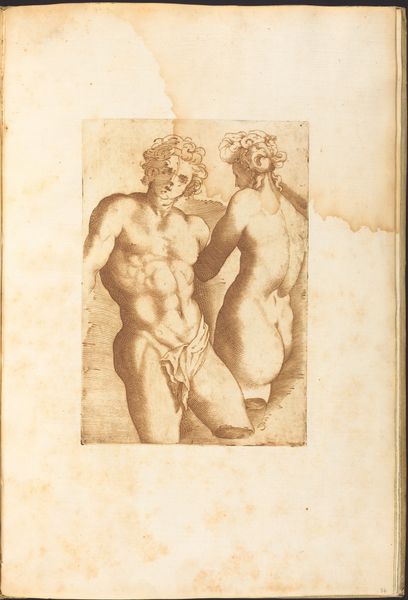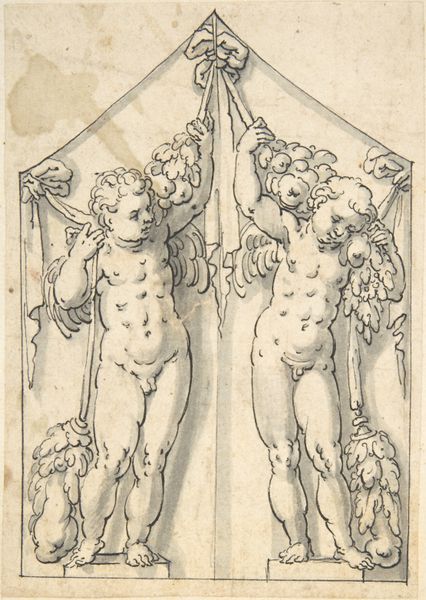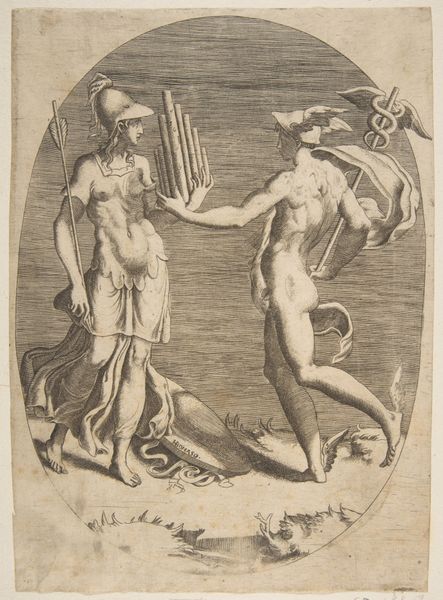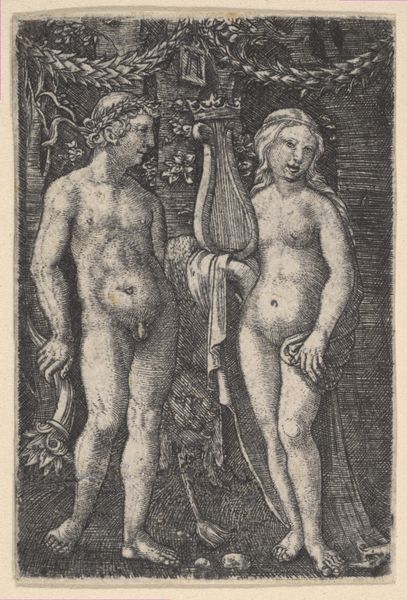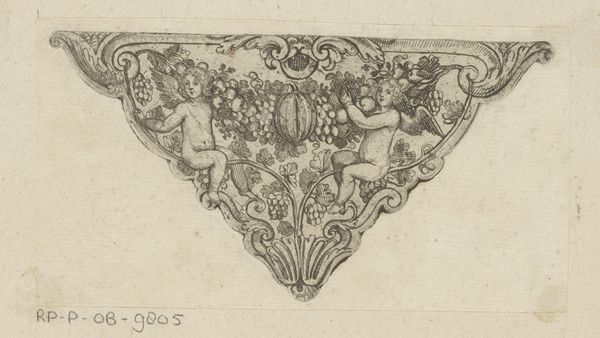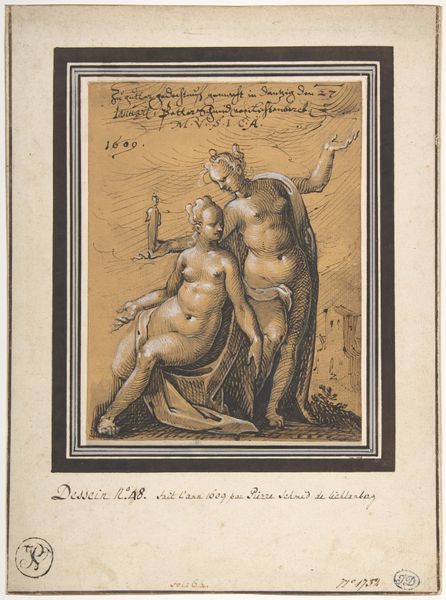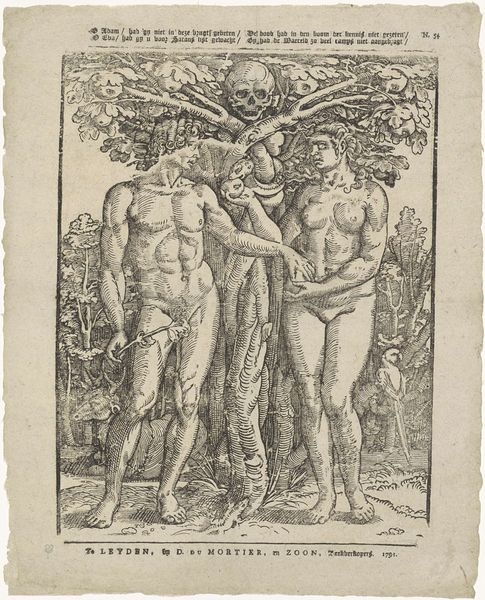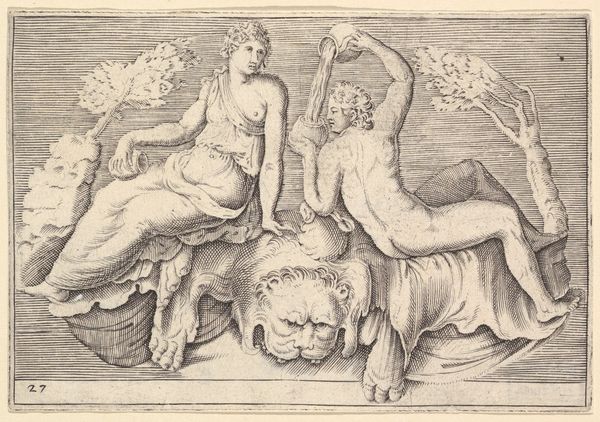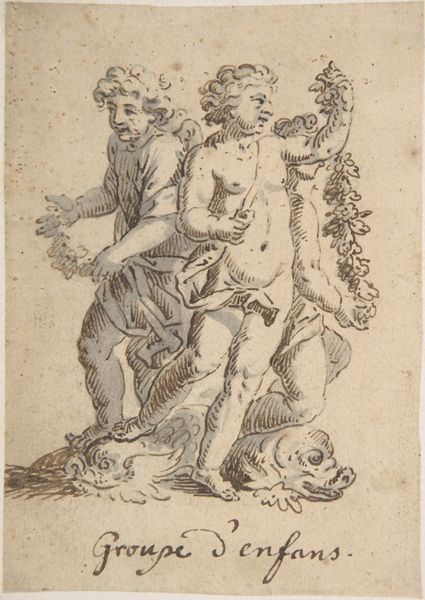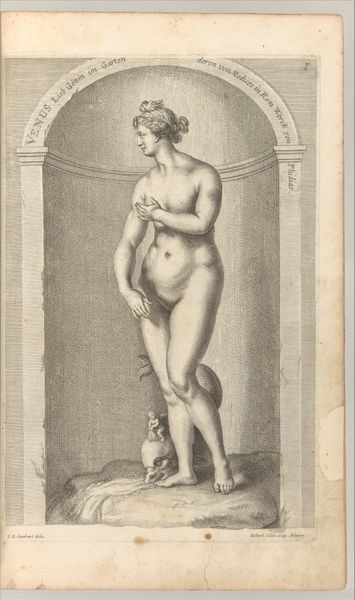
Octagonal Case and Two Other Motifs Held by Ignudi 1622
0:00
0:00
drawing, print, intaglio, engraving
#
drawing
# print
#
intaglio
#
figuration
#
11_renaissance
#
history-painting
#
nude
#
engraving
Dimensions: Plate: 3 1/16 x 4 3/16 in. (7.8 x 10.6 cm)
Copyright: Public Domain
Curator: Giovanni Battista Costantini created this engraving, "Octagonal Case and Two Other Motifs Held by Ignudi," in 1622. It’s currently held in the Metropolitan Museum of Art. Editor: It strikes me immediately as meticulously wrought, all those fine lines creating texture and depth. It's also curiously unsettling. The weight of those ornate objects, held so casually by the nudes… Curator: "Ignudi," or nude youths, are figures prominently featured in Renaissance art, notably by Michelangelo. The symbolise classical ideals, perhaps virtue and strength, embodying a pre-Christian aesthetic in Christian art. Editor: The bodies appear almost like props themselves, arranged to display the central octagonal design. I wonder about the labor involved in creating these intaglio prints. What kind of tools and workshops were required for this precise detail? Curator: Consider also how the images function as a sort of pattern book, disseminated through prints to influence decorative schemes across Europe. These ignudi reference antiquity while demonstrating virtuosity in ornament. This demonstrates the cultural capital associated with classical learning. Editor: Yes, and look at how the artist positions them on separate rocky outcroppings, further setting up the motifs as luxury items on display. The landscape becomes a platform to exhibit the ornamental objecthood. Were these objects commissioned designs, or purely imaginative exercises? Curator: It is quite interesting to think about how a patron might use this image as a springboard, incorporating symbolic patterns and Renaissance-inspired forms to communicate status. Editor: These ornamental designs speak volumes about social hierarchy and material desires. Even the simple act of viewing them brings attention to production and reception. Curator: It shows the ongoing human connection with the Renaissance, how deeply embedded classicism became within our collective visual language, reappearing across art forms over time. Editor: This engraving makes you wonder how luxury and the means to reproduce luxury influence the creation of symbols.
Comments
No comments
Be the first to comment and join the conversation on the ultimate creative platform.
